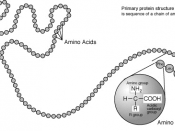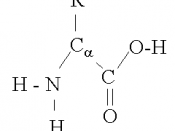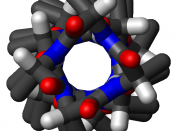A protein is a unique three dimensional biological polymer constructed from 20 different monomers called amino acid. Some of amino acids are glycine, alanine, valine, leucine etc. There are three structural levels in the conformation of a protein called primary, secondary, and tertiary structure. Primary structure is the unique genetically coded sequence of amino acids within a protein. Amino acids are bonded by peptide bond which links the amino group of one amino acid with the carboxyl group of another, yielding a polymer of amino acid called polypeptide. The polypeptide varies greatly in length from a few to thousand amino acid and has a amino group at one end and carboxyl group at the other end. Sanger, 1940, first sequenced insulin's amino acid first. Even a slight deviation from the sequence of amino acids can severely affect a protein's function by altering the protein's conformation like a single mutation of amino acid in hemoglobin case sickle cell anemia, a blood disorder that may be transferred from generation to generation.
Secondary structure involves the coiling of folding of the polypeptide backbone. An alpha helix is a delicate coil produced by hydrogen bonding between every fourth peptide bond in the polypeptide chain. An example of a alpha helix containing protein is alpha keratin, the structural protein of the hair which has alpha helix through out its length. A pleated sheet is also held by repeated hydrogen bonds along the protein's backbone. An example of pleated sheet is the structural protein of the silk. In an globular protein pleated sheet make up the core of the protein, and alpha helix forms the few stretches which is separated by the non helical region.
Tertiary structure of a protein is formed by the interactions between the various side chains of the constituent amino acids. Different...


